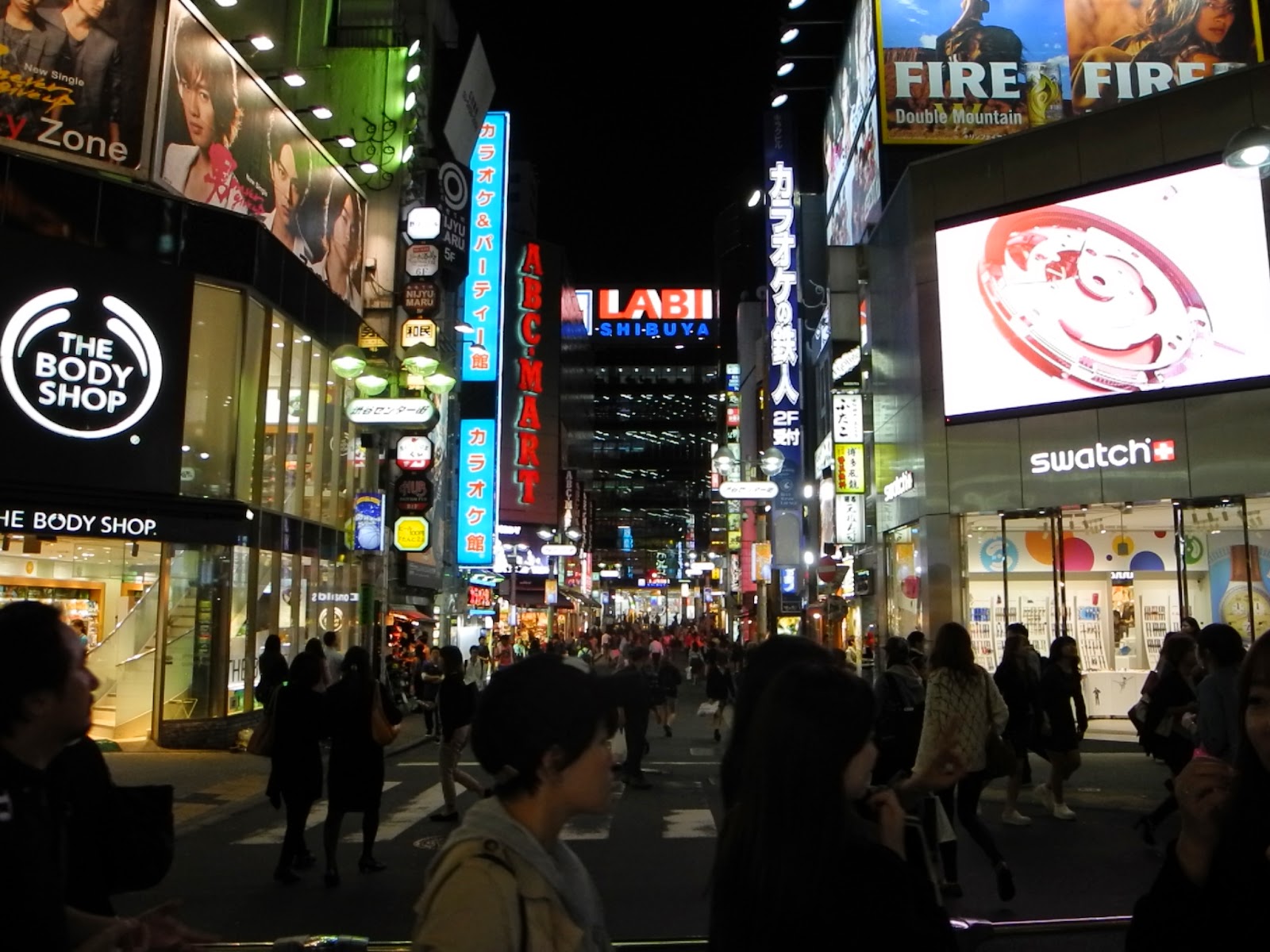 |
| Main intersection of Ginza |
Imagine someone asking me back in Japan, "What did you do last night?" If I had answered, "Oh, I went to Tokyo", my conversation partner probably would have looked at me in askance and given me a look that would have matched the same expression if I had been asked "What did you have last night for dinner?" and I answered "I had food".
There are too many different areas in the The Big Sushi. If I went to Akihabara, it would be to race into the electronics shops before they closed up. If I went to Shibuya, it would be to browse in Tower Records or some of the used CD shops to look for a hidden gem. If I went to Shimbashi or Ginza, it would be having dinner with some friends at a local izakaya, and if I ended up in Akasaka, people would be asking me how many zeroes there were in my client's bank book. One night in Tokyo means many things depending on which area I go to.
A few nights ago, I was watching the latest episode of NHK's "Kayo Concert", and the theme of the night was classic kayo duets. Two of the guests came out and did an exquisite number called "Una Sera di Tokyo" by The Peanuts. I had never heard of this entry by Emi and Yumi before, and the title alone screamed Mood Kayo even before I heard a single note. The rest of the performance was just so soothing and bar-friendly. Needed to swirl that whiskey on the rocks.
Well, when I started looking up the information for this song, I uncovered quite an interesting story for this Friday night. And as you can see from the heading for today's article, I think I may have brought together the Ocean's Eleven of Mood Kayo stars. First off, "Una Sera di Tokyo" (One Night in Tokyo) started life slightly differently. It had actually been conceived as a November 1963 single by The Peanuts titled "Tokyo Tasogare"(東京たそがれ...Tokyo Twilight), and that is the above video. Created by lyricist Tokiko Iwatani(岩谷時子)and composer Hiroshi Miyagawa(宮川泰), it was a pleasant enough ballad, I suppose, but I think it suffered a bit from a lack of oomph and an intro that sounded like something from an old monochrome horror movie. Not surprisingly, it wasn't such a big hit.
However, there was an unforeseen catalyst that came in from Italy. Singer Milva, who had gained a popular reputation in Japan as The Queen of Canzone (another title to add to two others: La Rossa and The Panther of Goro, arrived in 1964, presumably to hold some performances. King Records (which produced "Tokyo Tasogare") must have sponsored the tour since it was a staffer from that company who suggested that Milva could do a cover of The Peanuts song. The singer not only agreed to do the cover version but she did it in accurate Japanese.
Well, the skies opened, the rays of light beamed down and a chorus of Hallelujah rang down. Milva scored raves for her version of the song.
Light bulbs turned on above the folks at King Records, too. They and The Peanuts decided to give the song another chance. And with some tweaking in the arrangement and a wholesale change of the title from "Tokyo Tasogare" to "Una Sera di Tokyo", the new and improved version came out as a single in September 1964, almost a year after the first version had come out. To use my baseball analogy, a bloop single became a grand slam home run.
And in the years hence, a lot of other singers have done their own special take on the song...never bad if a song is aiming for a certain timelessness. Master crooner Yujiro Ishihara(石原裕次郎)just had to cover it as well. In addition, Yosui Inoue(井上陽水)and Akiko Yano(矢野顕子)have covered it.
https://www.amazon.co.jp/Japao-3-%E5%B0%8F%E9%87%8E%E3%83%AA%E3%82%B5/dp/B00M69J1WQ
(only a 30-second excerpt)
(only a 30-second excerpt)
Then, I came across this lovely and rich version by Lisa Ono(小野リサ)when she included it on her 2011 album, "Japao".
(2:27)
Of course, Oricon didn't exist at the time so the song's success didn't register on the charts. However, to add to the Cinderella effect, both Iwatani and Miyagawa earned prizes in their areas at the Japan Record Awards of 1964. And The Peanuts ended up performing "Una Sera di Tokyo" three times on the Kohaku Utagassen: 1964, 1969 and 1973. The above video is for their 1969 performance.
And in a great tribute to the composer, when Miyagawa passed away in 2006, it was this song that was playing at his wake. It would also become one of The Peanuts' most remembered songs.
 |
| Side street in Shibuya |
 |
| Shibuya |
 |
| Asakusa |
I liked very much your post! I adore to discover new details about the songs I like. Maybe Teresa Teng would deserve a mention here for her beautiful cover of this song. Let me know if you agree!
ReplyDeleteThank you very much, Tiziano for your comments. I'm happy that you have been enjoying some of the music here. Regarding Teresa Teng, I think at the very least, I should provide a link to her lovely version of the song:
Deletehttps://www.youtube.com/watch?v=p4tO8c1Pvw4